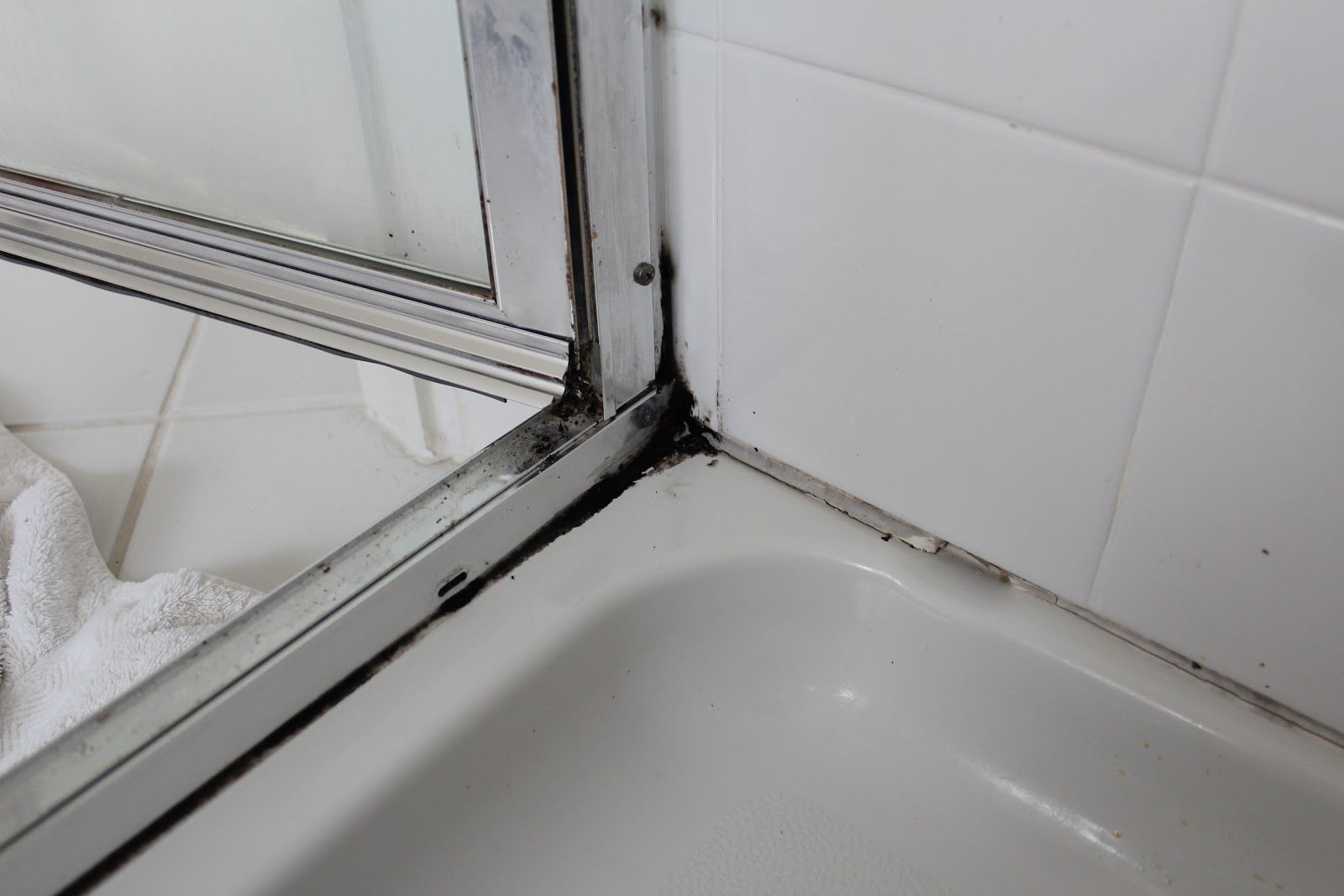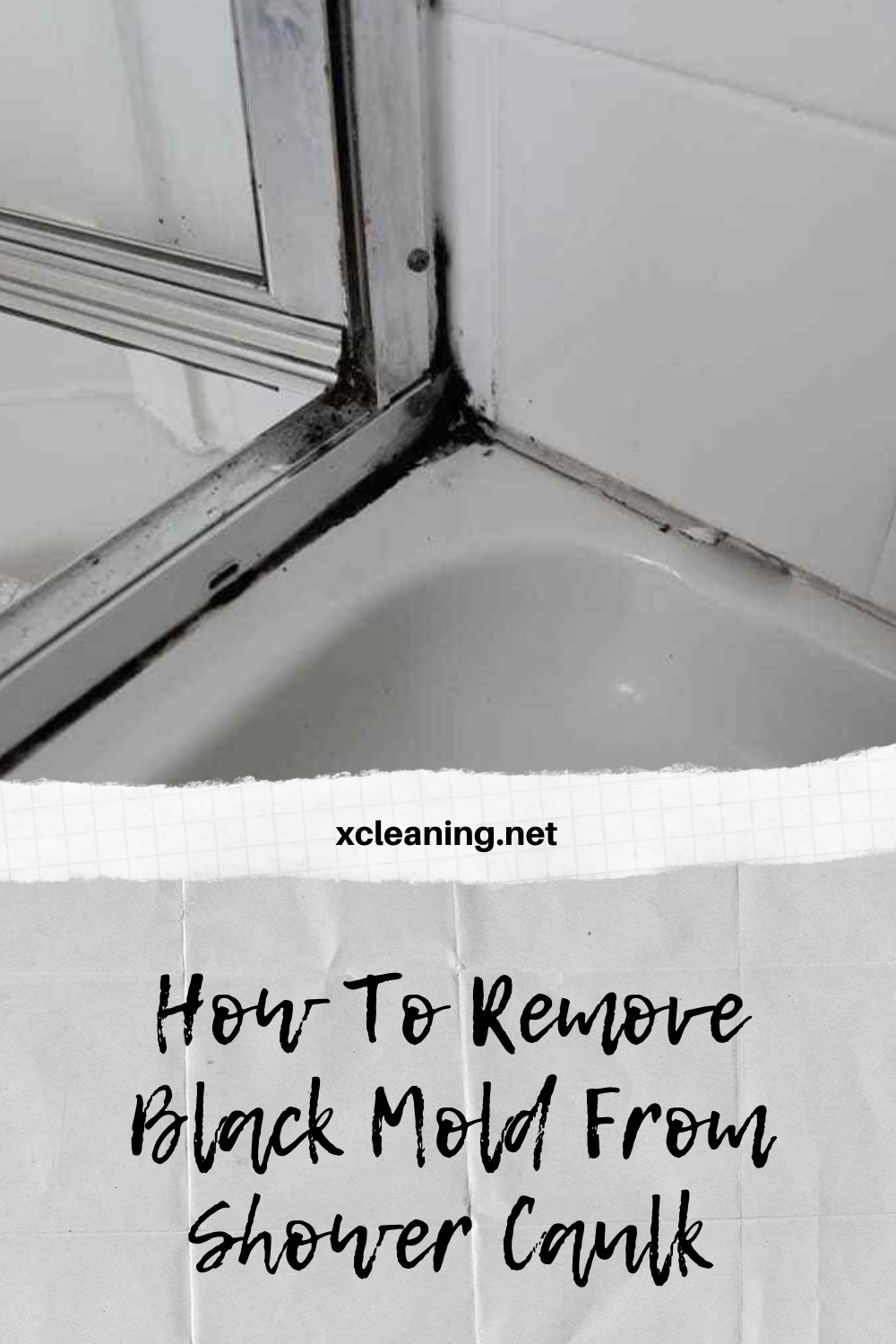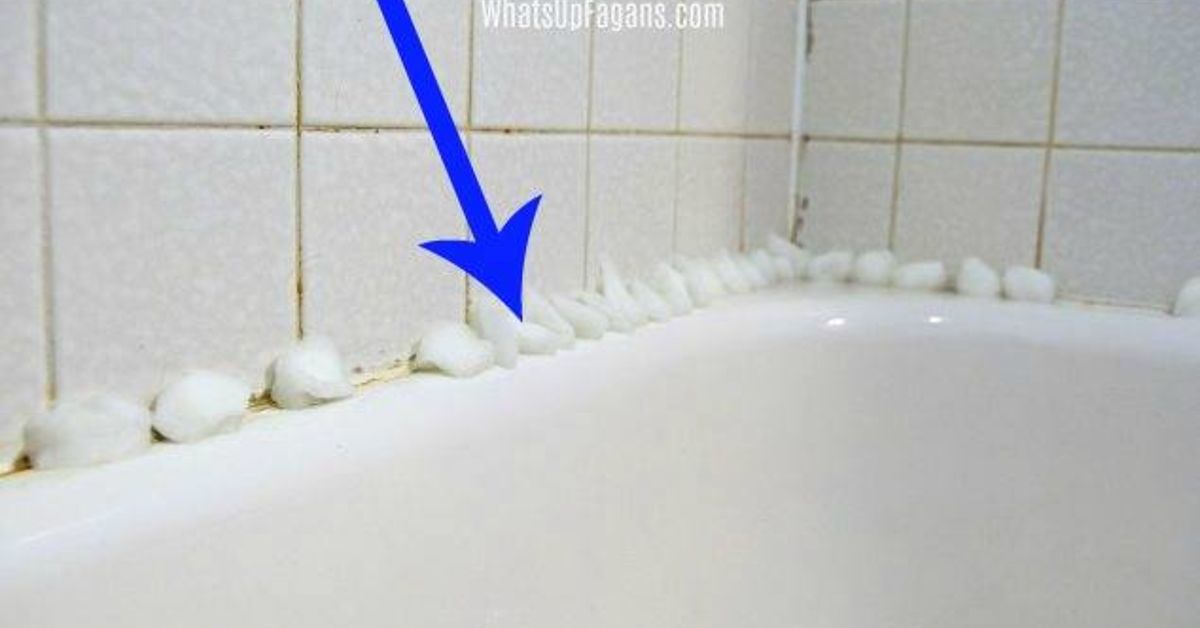Clean Your Shower Tiles With Vinegar And Dish Soap
Dish soap is another versatile cleaning product you can use on all kinds of grime and toxic mold. When you combine it with vinegar, it gets even more powerful.
This recipe is especially useful because it incorporates tea tree oil it not only is tops at removing mold but also leaves your shower doors and tiles smelling fresh.
- 1 pair of rubber gloves
- Scrubbing pad
Mix the water, vinegar, and oil in the spray bottle. Apply the solution to all areas that need cleaning. Let it sit for at least five minutes, and then scrub, rinse with hot water, and dry.
To keep your shower mold-free, spray your shower walls and shower curtain with the solution every day. This recipe can also be effective as a house wash solution to rid your home of mold and grime.
Causes Of Mold Growth On Your Shower Caulk
Mold spores are spread by air, and they can stay alive despite extreme conditions. Like any other organism, molds need food to grow. In this case, anything containing organic material can be food, but molds prefer cellulose above all else. They can form on paper, wood, particleboard, or drywall because of their cellulose content.
Apart from food, molds spread faster in the presence of moisture, oxygen, heat, high humidity, and low light. The reason black mold grows on your shower caulk is that your caulk often retains water and soap scum, which contains cellulose. If left untended for a few weeks, black mold will begin to germinate, especially in a warm dark bathroom.
Leaks, humidifiers, condensation, wet clothes, and lack of maintenance are common causes of serious mold growths.
Add A Dehumidifier To Shower
If your fan is not controlling the humidity enough to stop mold growth, or you just dont have one, then a dehumidifier is an excellent solution.
A dehumidifier can be a part of your home air conditioning system. But you can buy a portable dehumidifier for your bathroom to regulate the humidity level as well.
Fact: An exhaust fan might not be enough to keep the humidity levels down. Thats why we highly suggest you use a dehumidifier in your bathroom to prevent mold.
Because bathrooms are typically compact in size, you dont need to get a large dehumidifier. What you need to consider is the tank size of it. It is because the dehumidifier will be extracting a good amount of moisture. But if its not a hassle for you to often empty the tank, you can get a dehumidifier with a small tank.
As for us, weve been using a 30-pint dehumidifier because it generally has a reasonably-sized tank. The best part is it features a continuous drain option.
Recommended Reading: Mold Off Bathroom Ceiling
How To Caulk A Bathroom Shower With Mold Or Mildew
Related Articles
Mold is a real turnoff in the shower the blackening in all the caulked joints looks as unhygienic as it is, and it will never go away by itself. In fact, if you dont do something about it, it just gets steadily worse, because it thrives in the shower environment. Pulling off all the old, blackened caulk and laying a new bead is a good temporary solution, but without proper treatment, youll be hearing Im baaack before long. With a few household cleaning supplies and a little effort, though, you can put mold to rest for good.
Dont Miss: How To Clean Mold Off Bathroom Ceiling
How To Prevent Mold Growth On Shower Caulk

Mold cannot develop on surfaces in the home unless moisture is reduced and controlled. In very humid areas, adequate ventilation, as well as the use of air conditioning and dehumidifiers in the house, will reduce humidity levels to the desired range of 30-50 percent relative humidity. Outdoor air may be used to loIr humidity in the home in arid areas. To minimize the return of mold, follow these guidelines after each use of the shower.
Vented bathroom fan Building standards now demand one vented fan in each bathroom. This rule is waived for older properties until the bathroom is renovated. If a fan is installed, make sure the exhaust line is vented to the outside of the house rather than merely into the attic. After taking a shower, turn on the fan for an hour.
Remove damp towels Instead of hanging towels in the same room, consider hanging them outdoors to dry or running them through the dryer. It towels is one of the primary sources of moisture in a mold-infested room and needs to be removed to reduce the relative humidity level.
Dry the shower stall During and after a shower, water will cling to the shower tile and caulking. After drying the shower walls, remove the towel from the room.
Clean the shower walls once a week needing a bleach-based cleaner to destroy any mold spores that may have accumulated in the shower since the last cleaning. To get the greatest results from the cleaner, carefully follow the instructions.
Don’t Miss: How To Clean Mold In Basement
Q: What If The Mold Growth Is Extensive
A: Hopefully, you will find that you can clean the mold out of your shower yourself using vinegar, baking soda, or one of the other methods in this article.
But you might discover that your mold issue isn’t confined to one small spot in your shower. If it covers a more extensive part of the shower, you may need to call in a professional to help you kill it for good.
Also, if you are currently unable to control the moisture levels in your bathroom, you might need to make modifications.
You may, for instance, benefit from adding ventilation to the room or upgrading it. If that is the case, that could also necessitate calling in a professional. It would depend on how extensive the work would need to be to achieve the result you are looking for.
So How Do You Fix Mold In Shower Caulk
Your shower provides the perfect environment for mold spores, which is why mold in shower caulk is a common complaint amongst homeowners.
Fortunately, there are plenty of DIY solutions that you can try to help you remove any mold that may pose a threat to you and your family. It may be best to call in a mold removal professional for a safe and effective solution for severe infestations.
You Might Also Like:
Recommended Reading: How To Treat The Inside Of A Leather Holster
Why Do I Have Mold In My Shower
Its very common for mold to be found in the shower. There is lots of water and humidity in the bathroom which mold just adores.
Frequently running water in the shower creates wet surfaces and puddles of water. If you dont dry this moisture out quickly it can easily lead to mold growth.
On top of this, when the water in the bathroom does dry out it evaporates into the air and increases the humidity. Steam from the shower or a hot bath also makes the bathroom more humid. Since bathrooms are often not well ventilated the humidity tends to hang around and wet surfaces take a long time to dry out. Enter mold.
Another reason mold grows in theshower is because grime from body oils and soap scum which is washed off andonto the shower or tub create a food source for mold to feed on.
Basically, if mold were to have achoice vacation destination it would be the shower. Soooo inviting.
Can You Caulk Over Moldy Caulk
We dont advise putting caulk over moldy caulk because the new caulk might not adhere to the moldy caulk. If you caulk over moldy caulk, the chances are high that youll just be wasting your effort and money. However, if the old caulk is mold-free, clean, and dry, you can apply new caulk over the caulk.
Read Also: How To Clean Mould On Ceiling
How To Prevent Mold Formation In The Shower Caulk
First things first, make sure that the shower caulk is cleaned every few days. Also make sure that there is no water left on it for prolonged periods of time.
Baking soda is very effective in removing moisture from the caulk which will prevent further mold growth in the area.
A deep cleaning of the shower area every couple of weeks goes a long way in making sure that there is no mold formation.
Read Also: How Much Does Crown Molding Cost
Instructions On How To Remove Mold On Caulking
How to Remove Mold from Caulking in Shower
You dont want to mess with toxic fumes and have a health risk. If you have a bathroom fan, turn it on to help with having adequate ventilation. Open any nearby windows as well.
Continue adding more cotton balls or cotton coils to all moldy caulk in your shower, including along window ledges, and up the walls. Because the cotton is so wet, it will stick vertically. However, start at the top and work your way down if bleaching moldy caulking vertically, as the liquid will seep out and make the cotton balls below it fall off. Its okay to keep the cotton fairly wet, but it doesnt have to be super wet and drenched, especially if doing vertical parts.
You May Like: How To Clean Bathroom Mold On Ceiling
Health Effects Of Mold Growth
Molds dont just make your shower visually annoying they can have adverse effects on your health as well.
Modern bathroom areas are constructed with materials without cellulose so that it less likely to have toxic mold in your shower, but common black mold can still be harmful.
People with asthma, allergies, sensitivities, or weak immune systems often experience symptoms like rashes, skin irritation, sneezing, yeast infection, itchy eyes and difficulty in breathing.
These reasons and the simple fact that they are nasty are enough to get rid of molds in your shower caulk, and we are happy to show you how.
Disinfect Surfaces With A Baking Soda Solution

Baking soda is a great cleaner and disinfectant. You can make a baking soda paste for scrubbing grout or use baking soda to disinfect surfaces after removing the mold.
As a bonus, baking soda helps to get rid of odors.
To create a baking soda solution for use in a spray bottle, combine one to two tablespoons with two cups of water. This should dilute the baking soda enough for it to remain a liquid.
To create a paste for cleaning difficult areas, combine one part baking soda to one part water. Apply the paste to the surface and allow to dry before scrubbing.
Recommended Reading: Killing Mold On Bathroom Ceiling
Use Hydrogen Peroxide To Kill Black Mold
Hydrogen peroxide is another safe ingredient for mold removal. It does not harm the environment and it is non-toxic but you should still wear gloves when removing mold.
Hydrogen peroxide also contains antifungal and antibacterial properties. While it is strong, it works best when diluted.
Another benefit of the ingredient is the cost. You can get a six-pack of hydrogen peroxide bottles for less than the cost of a new shower curtain.
Combine one part hydrogen peroxide to two parts water. Mix the ingredients in a spray bottle and cover the moldy areas.
While hydrogen peroxide is safe to use, it does have a bleaching agent. To prevent bleaching, use it on small test spots before coating a large area.
How To Remove Old Caulk From Your Bathroom
Now that youve gathered everything youll need, its time to get started. This process could take some time, so youll want to make sure that youre not rushing to get this finished. Youll want to get rid of all the old stuff before you replace it with a new sealant.
If you need to soften the existing caulk to make it easier to remove, follow the directions for the chemical silicone remover youve chosen. When choosing a product, make sure it will work with the type of caulk youre trying to remove.
For caulk thats already softened and able to be removed, you can skip that step. Use your utility or putty knife to remove the caulk, being careful so you dont scrape the surface youre working on.
Plastic putty knives will help prevent scratching as youre removing multiple layers of old caulk off the bathtub. Check for any loose tiles while youre taking out the old caulking. Now is a good time to check for any other possible mold or water damage.
The needle-nosed pliers can help pull pieces away as youre cutting and prying with the putty knife. Put the old caulk into your container as youre removing it to keep your workspace clean.
Also Check: How Do You Clean Mold Off Of Leather
Ec3 Mold Solution Spray
EC3 Mold Solution is a natural compound consisting of citrus seed extract, plant oils, and distilled water. It works on almost every surface, including fabrics, tiles, wood, concrete, and even soft furnishings.
Spray an even coating over your sealant and leave it to stand for 10 minutes. Then rinse it off with water and dry thoroughly. Now reapply a new layer to the caulk and leave it to dry naturally.
You can spray this solution as many times as you like for preventative measures.
Take Proper Safety Precautions
Put on rubber gloves and a respirator, open the windows, turn on the bathroom exhaust fan and add enough household chlorine bleach to turn the baking soda into a paintable paste. Spread the paste on the moldy areas with a disposable paintbrush. Work quickly — the bleach may dissolve the paintbrush bristles.
Also Check: Removing Mold On Bathroom Ceiling
What To Do Before You Replace Your Caulk
Be sure your space is clean and doesnt have any soap scum, mold, or mildew. Bleach with some warm water can help you start off with a clean slate to put down new beads of caulk.
Wipe down everything with warm water and cleaning products to be ready to put in the new caulk. Nothing new can be put down until your surfaces dry completely.
You want a watertight seal when you put down new acrylic or silicone caulk bead. Silicone caulk is usually preferred in a bathroom setting because it provides a stronger seal against moisture. Sealing the edges is something youll want to pay attention to when putting in new silicone caulk.
Remove Mold From Shower Caulking
Seeing mold on shower caulking is not very unusual. Since, if youâve noticed black or pink mold on the silicone shower caulking, keep reading to learn how to remove mold from shower caulking, besides it, tips and hacks to keep the mold at bay.
Thus, mold infestation is widespread, and we are offering an excellent, short, and practical solution to you.
Recommended Reading: How To Get Rid Of Mold In Bathroom Ceiling
Ways To Prevent Shower Mold
Molded Shower Caulking & Eco Cleaning

You can use the tips mentioned above and hacks to remove despicable mold from shower caulking, but if you dont want to try on your own or feel like after your cleaning mold comes back, contact some professionals.
The professional team of Eco Cleaningoffers all kinds of quick, reliable, and trustworthy services of cleaning and repairing shower caulk by adopting environment-friendly steps.
You May Like: How To Clean Mold Off Of Ceiling
Why Does My Shower Caulk Get Moldy
Mold spores are attracted to warm, damp areas with low light levels where they can grow and thrive. Thanks to your showers heat and humidity, it makes the perfect area for household molds.
Not only does your shower provide a hospitable environment for mold, but it also offers a steady food supply. Most molds feed off cellulose, which is found in wood, drywall, and more around your bathroom.
Theres also plenty of cellulose in the body hair, oils, and soap scum that build up around shower caulking, making it a particularly attractive spot for mold spores. Youre more likely to see mold in shower caulk that has a poor seal or is disintegrating.
Water, body oils, and more get trapped to provide a rich environment for mold spores. Cracked or misaligned tiles can also trap water and lead to mold issues. Showers with poor ventilation and low lighting are the most likely to attract mold.
